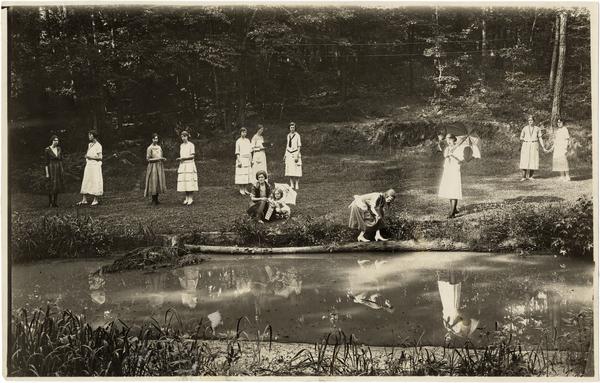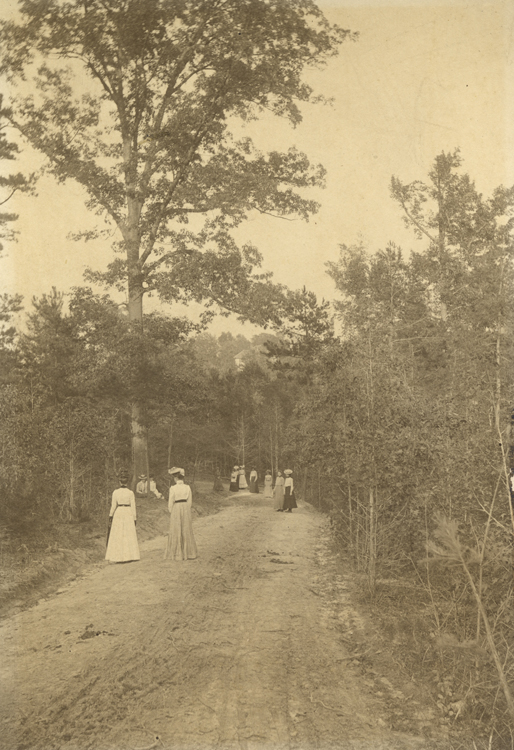Take a look at a campus map. What strikes you about the physical layout of the school and its use of green spaces? It is a campus that is filled with looping walkways, clusters of enormous oaks and pines, manicured gathering places, secluded benches and gardens, and pristine playing fields. The largest open space at The University of North Carolina at Greensboro (UNCG) is Peabody Park. The history of the Park’s development, design, and use mirror the school’s own growth.
When the college was founded in 1891, UNCG (known at the time as the State Normal and Industrial School) was situated on ten acres of former farm land. Recognizing the rapid growth in student enrollment and the need to construct future classrooms and student housing, the school’s administration made the decision to purchase 112 acres adjoining the property’s original footprint. In 1895, the North Carolina Legislature appropriated monies to improve the condition of this new area, allowing for “the expansion of the institution on the only side not already occupied by residences.” The Legislature also mentioned that a portion of the new land could be used as a park for open-air exercise, as well as for the study of horticulture. Yet, the Legislature only approved half of the school’s request for $22,000 of improvements. Nevertheless, the College immediately began to use this wooded space. Under the direction of Dr. Anna Gove, the school’s physician, students were required to devote sixty minutes each day to walking in the new park.
The fortunes of the school and the newly acquired property changed in 1901 with the announcement of a gift of $10,000 made by George Foster Peabody, a distant relative of the more well-known George Peabody, whose Peabody Education Fund supported Southern public schools. The New York financier designated $5,000 to be used for the development of an educational park and an additional $5,000 to meet other needs of the College. The donated monies were to be spent on beautifying the existing space and creating several miles of well-graded walking paths. Moreover, the plan was that every hill, spring, or bench would be dedicated to a great educational leader or historic event. Each location would be marked by a granite block with an appropriate description. It was imagined that other private donors would give monies to create additional markers, as well as pavilions and rustic benches.
In an October 1901 letter to President McIver, George Foster Peabody was pleased to hear that the Park would be officially named “Peabody Park.” He modestly hoped that people would realize that it was in honor of his relative and philanthropist George Peabody, and not himself. A number of North Carolina newspapers praised the construction of the educational park at the State Normal. The Raleigh-based newspaper The News and Observer declared that the Park was a “noble idea” that would forward the “civilization” of the state! The Park project envisioned that students would be benefit from both open-air exercise and the educational content provided by the educational markers. In turn, the well-educated women of the State Normal would enhance the civic life of North Carolina.
The next installment of “A Noble Idea:” The History of Peabody Park will cover the evolution of the Park from a place of strolling and reflection to one of recreational activities, open-air theatrical performances, and finally, institutional encroachment.


